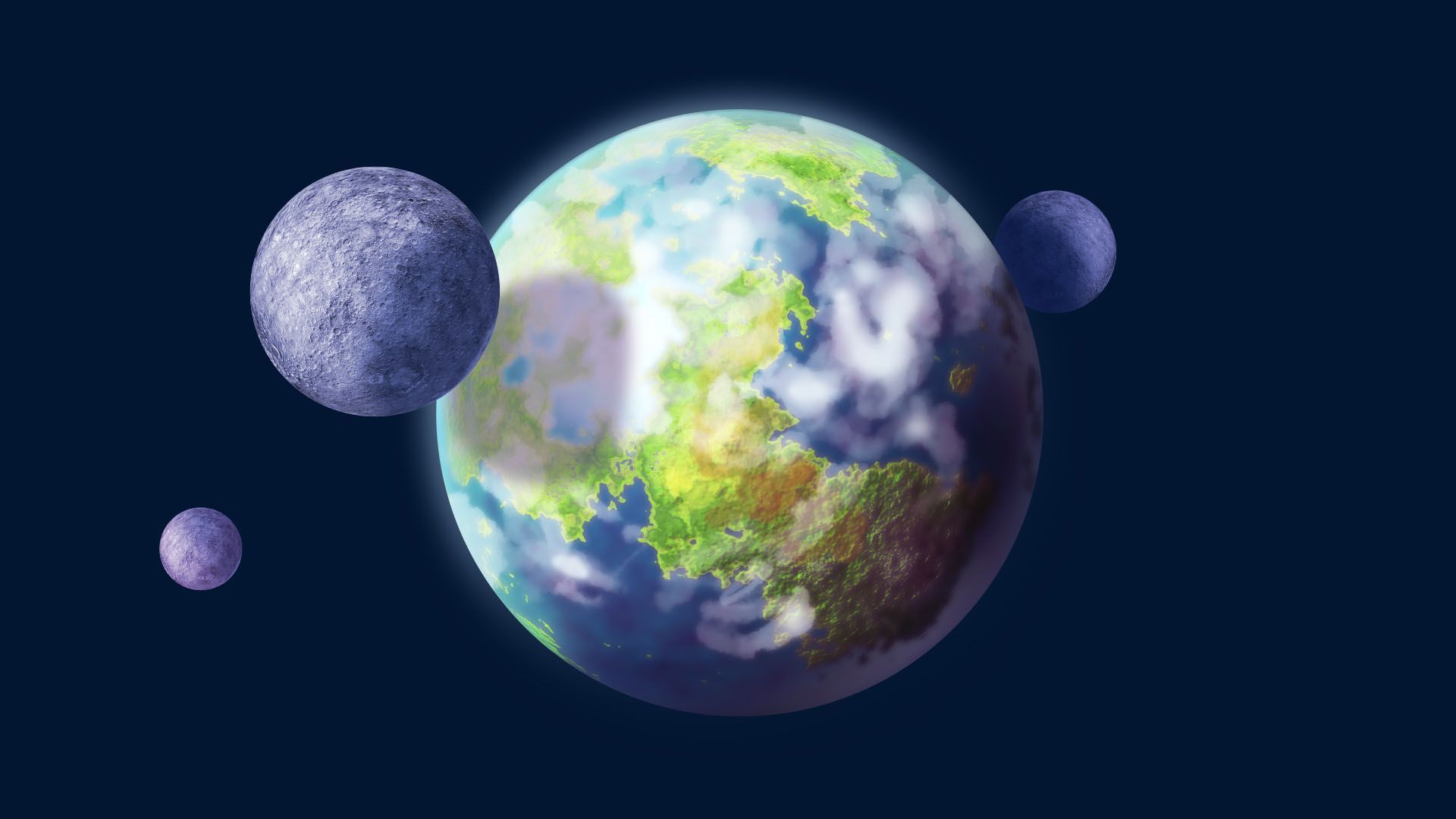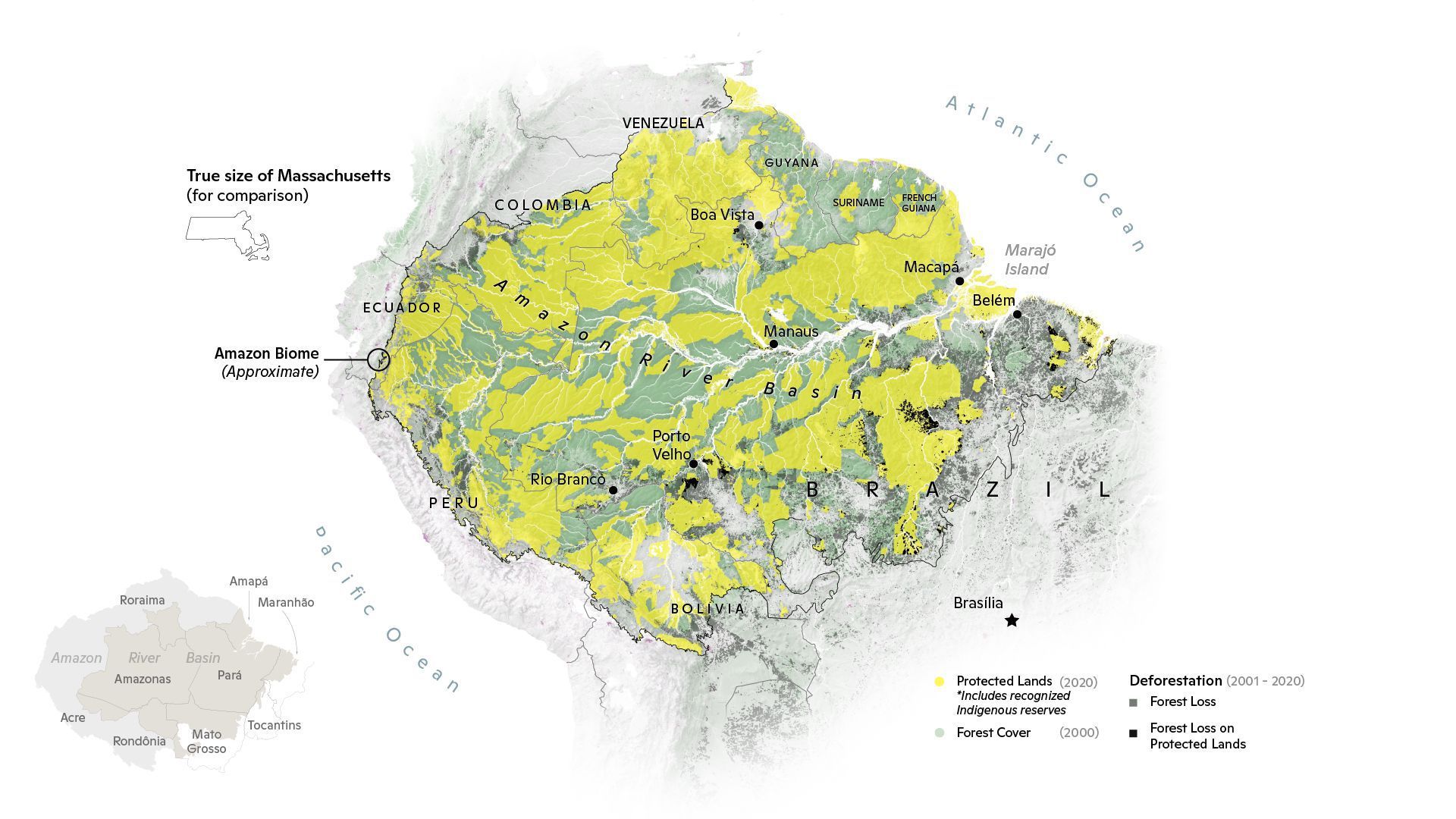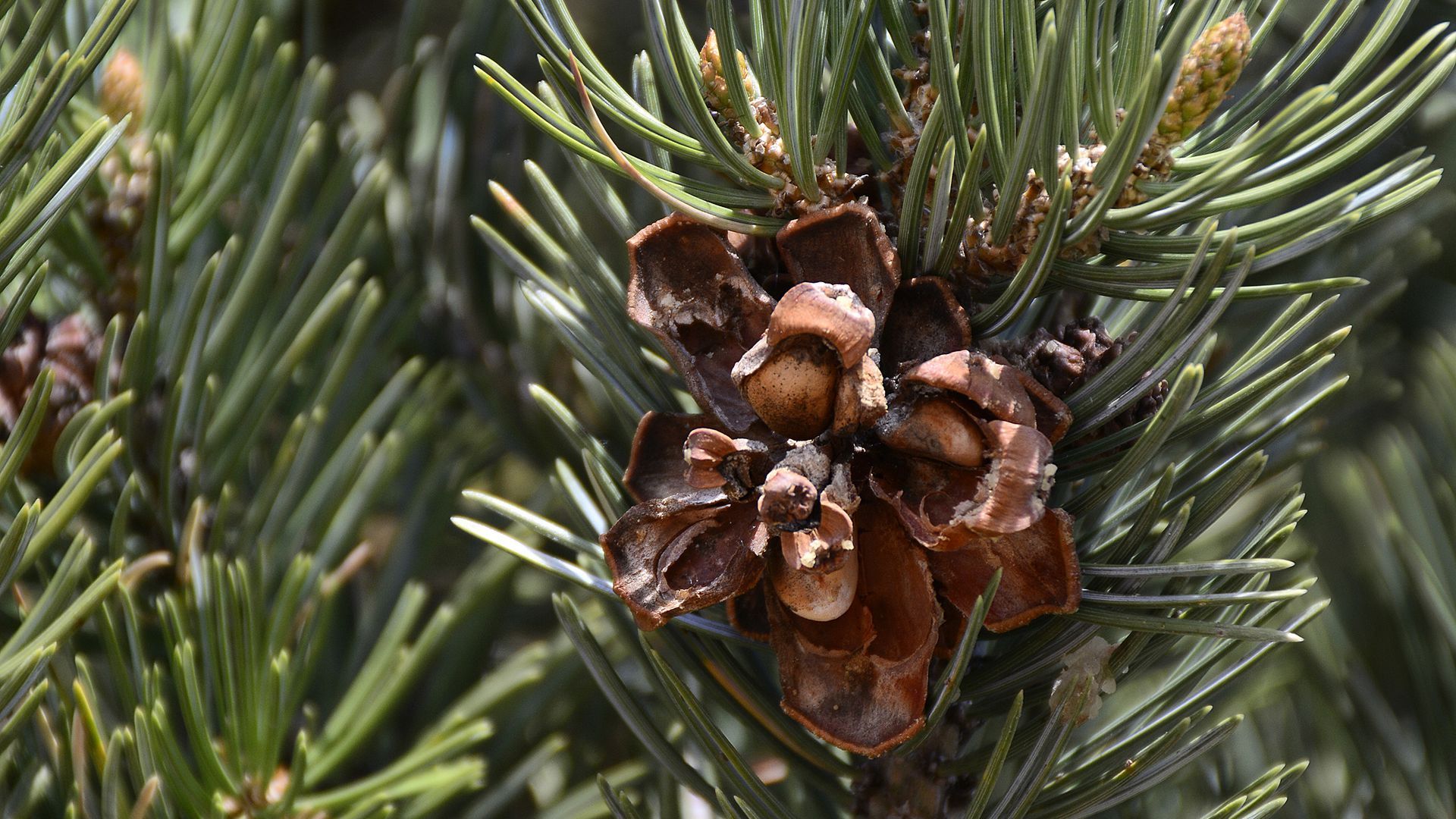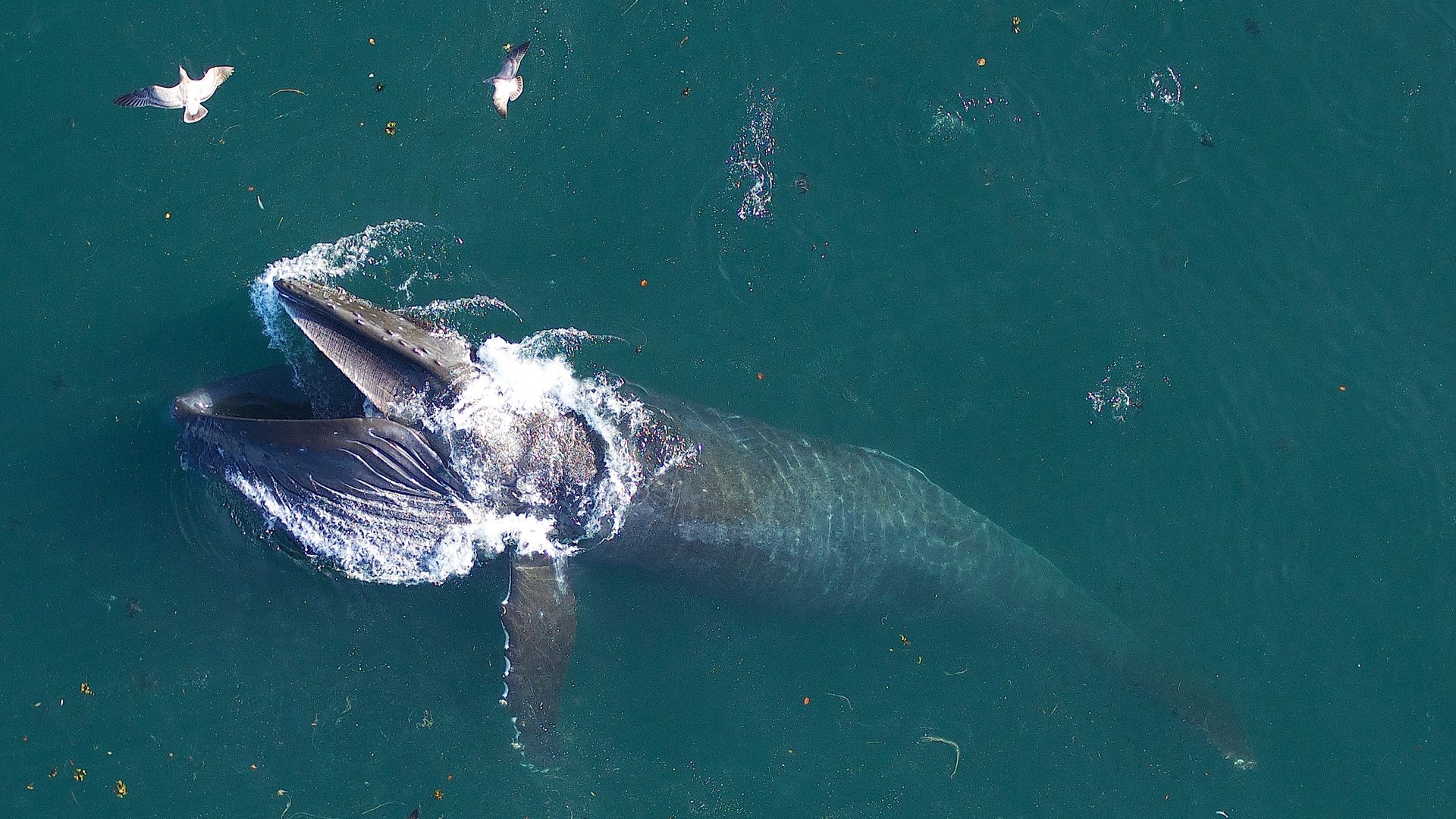| | | | | | | Presented By Biogen | | | | Axios Science | | By Alison Snyder ·Nov 04, 2021 | | Thanks for reading Axios Science. This week's newsletter is 1,396 words, about a 5-minute read. - This newsletter will be off next week, but we'll back in your inbox on Nov. 18.
- Send your feedback and ideas to me at alison@axios.com.
- Did someone forward this to you? Sign up here.
| | | | | | 1 big thing: Ambitious new plan aims to find an Earth twin |  | | | Illustration: Sarah Grillo/Axios | | | | A new, once-in-a-decade, influential report urges NASA to double down on developing the technology needed to find another Earth, Axios' Miriam Kramer and I write. Why it matters: Settling whether life is rare and unique in the cosmos would fundamentally change our view of the universe. - "When we see the first hint of life out there in the universe and see the fingerprints of life in a distant world, humanity's place in the universe is fundamentally changed," says John O'Meara, chief scientist at the W.M. Keck Observatory and a senior member of the team behind LUVOIR, one of the space-based telescope mission concepts considered in the new assessment.
- On the flip side: "If we looked at 25, 50 or 100 exoplanets and saw nothing, that also fundamentally changes our view of the universe," he adds.
Driving the news: The decadal survey — released Thursday — is a long-awaited document that gives NASA and the National Science Foundation a mandate to develop the technology needed to actually find an Earth twin in the coming decades. - One of the highest priorities in the new report is that NASA fund and build a telescope much larger than the Hubble Space Telescope.
- The decadal survey suggests the telescope — which would look out into space in ultraviolet, optical and infrared wavelengths — would cost about $11 billion to build and would launch in the early 2040s.
State of play: Other missions have focused on characterizing and searching for planets that could be habitable around other stars, but this mission would allow researchers to confirm another Earth around a Sun-like star, something that isn't possible with current technology. - A big hurdle has been the ability to block the light from stars as bright as the Sun, in order to reveal any relatively small planets that might orbit them. That depends on building an ultra-stable space telescope and an instrument called a coronagraph.
- Those technologies aren't here yet but have been developed far enough that there is now a path, O'Meara says.
- The telescope envisioned by the decadal survey will be able to search 100 or more Sun-like stars to figure out what types of planets orbit them.
- "Then for the most exciting ~25 planets, astronomers will use spectroscopy at ultraviolet, visible, and near-infrared wavelengths to identify multiple atmospheric components that could serve as biomarkers," the report says.
The big picture: The report combines elements of two of the four possible missions and leaves room for two other mission concepts that would use different wavelengths to give scientists the full breadth of what's going on out in the universe. - X-ray observations would help determine how elements that are critical for life are born in the explosions as giant stars merge. With far-infrared data, astronomers could watch the rise of water throughout the universe.
- This panchromatic data tells "the story of life" from the Big Bang to the biosignatures that might be spotted on exoplanets, O'Meara says. "That is more enriching than any mission alone."
But, but, but... This next-generation fleet of space telescopes will have to clear technical hurdles and still needs Congress' support. - The experience of the James Webb Space Telescope — long delayed and massively over budget — could give some lawmakers pause in funding what astronomers tell Axios is an ambitious plan.
- But the new survey appears to incorporate some lessons learned from JWST's development, including the flexibility to adjust the mission design.
- "We have put a lot of thought into trying to avoid or mitigate the issues JWST ran into," says Aki Roberge, an astronomer at NASA's Goddard Space Flight Center who was a study scientist for LUVOIR.
|     | | | | | | 2. What determines a forest's fate |  | | | Data: Forest coverage and deforestation from Hansen, et al. 2020 version 1.8. Croplands from ESA Copernicus Land Cover 2019. Map: Carl Churchill, Woodwell Climate Research Center | | | | With a global initiative on deforestation announced in Glasgow Monday, there's a spotlight shining on places like the Amazon, Axios' Andrew Freedman writes. - Researchers say that land status, such as whether a swath of rainforest is within a protected reserve or recognized Indigenous lands, can be the determining factor in deforestation.
Why it matters: Due to land clearing for agriculture or other uses, parts of the Amazon have already passed a tipping point from a net absorber of carbon emissions to a net source, and the pace of deforestation has increased in recent years, threatening the Paris agreement's temperature targets. Context: The map above, by cartographer Carl Churchill of the Woodwell Climate Research Center in Massachusetts, shows the Amazon ecoregion of South America. - Protected lands as of 2020 are seen in yellow. The area affected by deforestation in the last 20 years is visible in darker gray.
- For comparison, rainforest cover as of the year 2000 is also included (green).
- Major cities in the Brazilian Amazon are depicted, as well as a figure showing the Brazilian states the basin covers.
The bottom line: Much of the deforestation in the Amazon during the past two decades has occurred outside protected lands. |     | | | | | | 3. Catch up quick on COVID-19 |  Data: New York Times; Cartogram: Will Chase and Kavya Beheraj/Axios "New COVID-19 infections fell by about 20% nationwide over the past two weeks, though parts of the West and Midwest are seeing their caseloads tick higher," per Axios' Sam Baker and Will Chase. Up to 80% of deer sampled in a study in Iowa were infected with coronavirus, raising concern about an animal reservoir being established for the virus, Andrew Jacobs writes in the NYT. Covaxin, a low-cost coronavirus vaccine developed in India that can be stored in a fridge, received emergency use authorization from the WHO, Anuron Kumar Mitra and Shivani Singh of Reuters report. The surge in infections in the U.K. "shows that vaccines alone cannot contain the virus," some scientists who advocate for combining them with other public health measures tell Luke Taylor at Nature. |     | | | | | | A message from Biogen | | Biogen is unlocking the science behind the Alzheimer's puzzle | | |  | | | | Biogen is enhancing our understanding of Alzheimer's disease. What this means: Scientists are using imaging to look inside the brain, assess the presence of proteins and see if potential therapeutics reach their targets. Learn more about advances in Alzheimer's Disease research from Biogen. | | | | | | 4. Worthy of your time |  | | | A cone holding several edible nuts clings to a piñon tree growing near Santa Fe, N.M. Photo: Robert Alexander/Getty Images | | | | The disappearing piñons (Russell Contreras — Axios) As Earth warms, secrets emerge from the ice (Franz Lidz — NYT) After 30 years of breeding condors, a secret comes out (Sarah Zhang — The Atlantic) Are you sure you know what emotions are? (Andrew Ortony — Psyche) |     | | | | | | 5. Something wondrous |  | | | A humpback whale feeds off the coast of California. Photo: John Durban | | | | Blue, humpback and other baleen whales may eat as much as three times more krill than scientists previously thought, according to new research. Why it matters: In life, what goes in, comes out. Baleen whales digest the tiny crustaceans and excrete iron, which supports blooms of phytoplankton that are a key component of ocean ecosystems and capture carbon. - "Whales are ecosystem engineers," says study co-author Nick Pyenson of the Smithsonian Institution's National Museum of Natural History.
- "They are manipulating their environment by their own needs and physiology."
- Restoring whale populations that were decimated in the last century by hunting could boost the blooms — helping to actually increase the amount of krill and improve the health of ocean food webs, the researchers write in Nature this week.
The unknown: The largest whales are the biggest animals ever on Earth — yes, even heavier and longer than a Tyrannosaurus Rex. - But since they spend almost all of their life below the surface of a vast environment and can't be kept in captivity, there are basic unanswered questions about their biology, including how much they eat.
What they did: Between 2010 and 2019, researchers tracked 321 baleen whales representing seven different species with sensors suction-cupped to their backs that allowed scientists to detect when the whales lunged for prey, one mode of feeding. - Drone photographs were used to estimate how much area the whale's open mouth covered, and sonar gave the scientists a measure of how much krill and other prey was near individual whales as they ate.
- They found that whales eat about three times as much krill as previously estimated from measurements of food in the stomachs of hunted whales.
- Researchers also report that before they were hunted, whales in the Southern Ocean consumed some 430 million metric tons of krill — more than twice as much krill as exists there now.
The impact: "That tells us we are missing a lot of the ecosystem function, and if we undertake steps within our power to promote the recovery of whales, we might recover lost ecosystem function," Pyenson says. The big picture: "Big things matter," he says. "Some [big animals] have an influence disproportionate to how abundant they are." - For example, he notes when wolves were reintroduced to Yellowstone, the landscape changed as a consequence of these top predators eating deer that in turn were no longer eating the trees along the riverbanks.
- "People thought big things were charismatic and ornamental, and that isn't always the case."
|     | | | | | | A message from Biogen | | Biogen is transforming how we understand and treat Alzheimer's | | |  | | | | Biogen is on an unrelenting mission to help those living with Alzheimer's. - Biogen scientists are advancing research by connecting the dots from experiments to clinical trials, learning from the past to change the future.
Learn more about Biogen's commitment to solving the Alzheimer's puzzle. | | | | Thanks to Sarah Grillo for this week's illustration and to Amy Stern for copy editing this newsletter. |  | | It'll help you deliver employee communications more effectively. | | | | | | Axios thanks our partners for supporting our newsletters. If you're interested in advertising, learn more here.
Sponsorship has no influence on editorial content. Axios, 3100 Clarendon Blvd, Suite 1300, Arlington VA 22201 | | | You received this email because you signed up for newsletters from Axios.
Change your preferences or unsubscribe here. | | | Was this email forwarded to you?
Sign up now to get Axios in your inbox. | | | | Follow Axios on social media:    | | | | | |









No comments:
Post a Comment